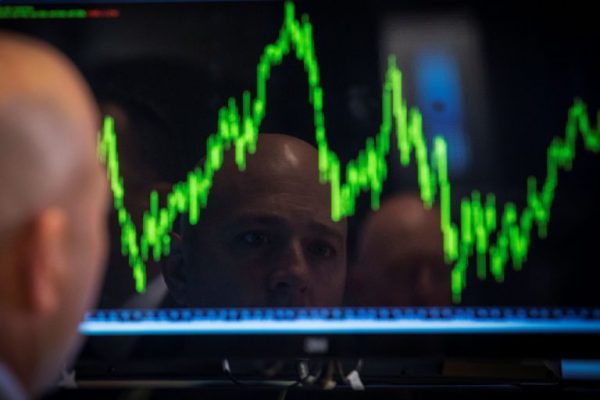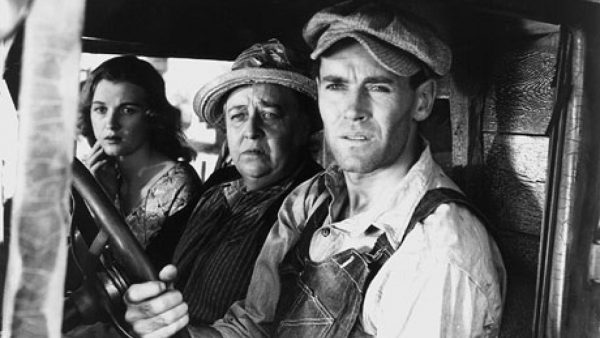
Explosive growth in the 2020s is back in the spotlight. This scenario has been discussed during the pandemic, and its proponents have estimated that the recession caused by Covid-19 would be followed by high growth rates, similar to those of the 2020s. The term is the roaring twenties, that is, the hectic twenties.
Business Insider says in its analysis that major media headlines closely resemble American newspaper articles in the 1920s, when the country was emerging from the influenza epidemic, World War I was behind it and the economy was mostly booming. Due to consumer spending and technological innovations.
Robert Kiyosaki: “The United States will become the poorest country in the world”
reminds you of something; Today we are talking about the end of the pandemic, how good consumption is in the United States, artificial intelligence and its achievements occupy the press every day, and on Wall Street the S&P 500 is “approaching” a new all-time high.
“The similarities are quite similar,” explains Alex McGrath, chief investment officer at NorthEnd Private Wealth.
These similarities have fueled scenarios circulating on Wall Street that America is once again headed toward a long-term economic boom that will push the stock market to new heights, just as it did a century ago.
So are the roaring twenties back?
Market veteran Ed Yardeni of Yardeni Research seems to think we're back in the 1920s and says this is likely due to increased productivity unlocked by technological innovations.
He argues, as he mentions through his remarks, that adopting artificial intelligence can help increase the efficiency and profits of companies in various industries.

Productivity growth is essential because it can help expand workers' wage growth without the negative byproduct of increasing inflation. This would be the moderate scenario for the economy. The term describes the ideal state of an economic system. In this ideal state, there is full employment, economic stability, and steady growth. In this context, the US Federal Reserve will not have to curb growth by raising interest rates, as it sought to do throughout 2022 and the first half of 2023.
“AI is just one of many technological innovations that will likely drive the economy through the 2020s,” Gardini points out.
We've seen this scenario before, where technology contributes to greater efficiency and sustainable economic growth.
Consumer boom
In the 1920s, a slew of technological innovations helped workers increase efficiency, companies increase profits, and consumers save time. The automobile, electricity, agricultural machinery, telephone, radio, as well as a series of household appliances, such as the refrigerator, entered people's daily lives.

Demand for these new products gave rise to today's consumer credit system, in which banks and businesses offer customers instant loans and payment arrangements at the time of purchase to support product purchases, not unlike the recent rise of “buy now, pay later.”
The rise of consumer credit fueled the economic boom of the 1920s, which was characterized by 20% annual stock market returns, Jay Hatfield, managing director of Infrastructure Capital Advisors, explains to BI.
“We expect low double-digit stock returns to persist over the next five to seven years until the next Fed tightening cycle,” he continues, adding that “sustainable stock market returns are primarily driven by earnings growth, not double-digit expansion, so we believe Low fifteen-figure returns are likely.”
If these gains materialize, the S&P 500 would trade above 10,000 by 2030, more than double its current levels.
This thinking is consistent with the assessment of Sonu Varghese, global strategist at Carson Group, who believes US stocks will be the best investment over the next five years, with a potential upside of 100%. A sustained recovery in productivity growth was the main bullish factor behind Varghese's forecast.
Not so fast
However, not everyone is so optimistic. There are strategists who insist on predicting a recession in 2024. This would undoubtedly turn the narrative of the 2020s on its head.
“It's too early to assume the good days are back,” said Terry Sandvin, chief equity strategist at U.S. Bank Wealth Management. “Higher inflation and longer-term interest rates, potential pressures on corporate earnings, and already high valuations temper our modest upside outlook.”

This year's strong economic growth trend could be reversed in 2024, says McGrath, NorthEnd's head of IT.
“Economic growth certainly surprised to the upside in 2023, but that narrative may become more muted as the spillover effects of higher interest rates play out in our country and around the world,” he said.
The return of the Roaring Twenties appears to depend on what Fed Chairman Jerome Powell does regarding interest rates in 2024, along with how long the consumer and labor market can remain flexible.
The specter of the Great Depression of 1929
Those who know history remember that the 1920s marked a dramatic finale with the Great Depression of 1929. For literature fans, it is the transition from the life of The Great Gatsby to The Grapes of Wrath.

So does Sam Stovall, chief investment strategist at CFRA Research, who wonders whether an era of long prosperity will end with the same blow as a century ago, when the Great Depression struck in 1929 with an 89 percent decline in the Dow Jones Index.
The aforementioned technological advances and the consumer credit system that fueled so much growth ended up becoming a double-edged sword.
We had similar conditions (consumer demand, economic expansion, technological innovations) after World War II. So, I guess the real key question is: “Can the US stock market set itself up for a crash like the one in 1929?” Says BI features.
Such a decline would mean complete and utter disaster for investors, consumers and the global economy.
But Stovall is not worried and stresses that things are different this time. Since then, he says, various checks and balances have been put in place that did not exist before.
“I would say no, because conditions in financial markets today are not what they were in the 1920s,” he adds, adding, “In fact, we now have regulatory bodies and trading rules to avoid such outcomes as we saw after the global financial crisis.” Crashes.” .
For example, investors can't buy stocks at a 90% margin as they could in the 1920s, he says.
So, while the similarities between today and 100 years ago seem uncanny, the consensus seems to be that whatever era of prosperity lies ahead will end in a 1929-style catastrophe.
If the Roaring Twenties are upon us, now is a very good time for equity investors and economists to buckle up and enjoy the ride.

“Avid problem solver. Extreme social media junkie. Beer buff. Coffee guru. Internet geek. Travel ninja.”





More Stories
“Recycling – Changing the water heater”: the possibility of paying the financing to the institution once or partially
Libya: US General Meets Haftar Amid Tensions Between Governments
New tax exemption package and incentives for business and corporate mergers..